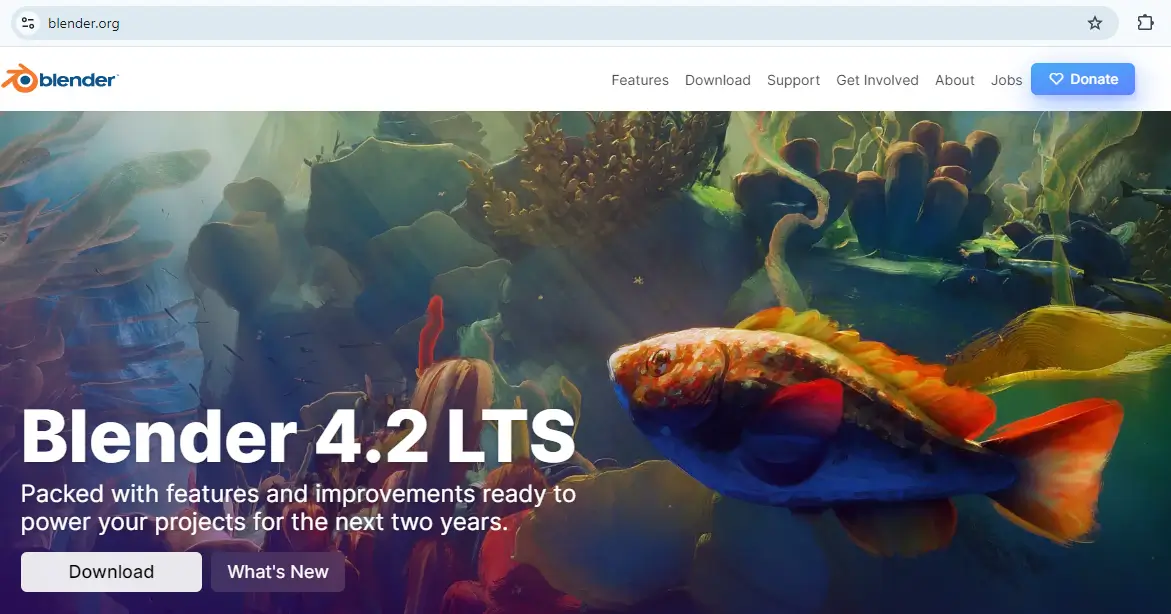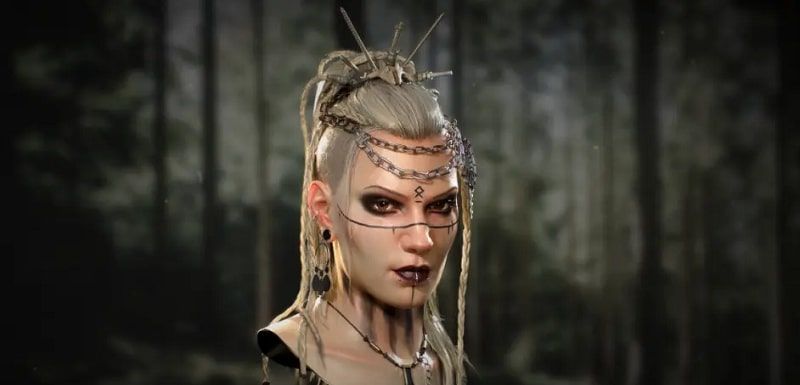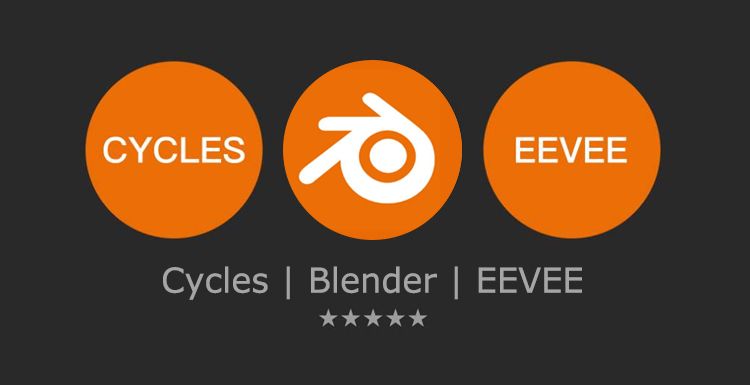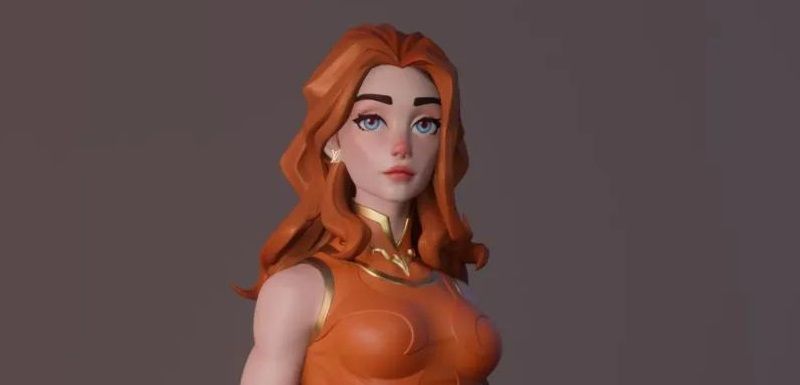
Blender est un outil incroyablement puissant pour le rendu architectural, apprécié aussi bien par les débutants que par les professionnels pour sa flexibilité, son accessibilité financière et sa capacité à produire des visuels époustouflants. En tant que logiciel open source, il est accessible à tous, et ses deux moteurs de rendu principaux — Eevee pour le rendu en temps réel et Cycles pour des résultats photoréalistes — offrent une grande polyvalence selon les besoins.
L’optimisation de l’éclairage, des matériaux et des paramètres de rendu est essentielle pour obtenir des rendus architecturaux de haute qualité. Utiliser un éclairage HDRi pour créer des environnements réalistes, affiner les options de débruitage de Cycles et exploiter l’échantillonnage adaptatif peut considérablement améliorer l’efficacité du rendu et la qualité finale.
Qu’est-ce que le rendu architectural avec Blender ?

Le rendu architectural avec Blender consiste à utiliser Blender, un logiciel 3D gratuit et open source, pour créer des visualisations architecturales de qualité professionnelle. Ce processus inclut la modélisation de structures, l'application de textures réalistes, ainsi que la production d’images ou d’animations haute définition. Blender propose deux moteurs de rendu principaux : Cycles, réputé pour ses capacités de pathtracing offrant des rendus photoréalistes avec un éclairage et des reflets précis, et Eevee, un moteur de rendu en temps réel basé sur OpenGL, qui privilégie la rapidité et l’interactivité tout en gérant efficacement les matériaux PBR.
Ces fonctionnalités font de Blender une alternative puissante aux logiciels coûteux comme 3ds Max ou V-Ray. De plus, Blender prend en charge des fonctionnalités avancées telles que la modélisation procédurale, les matériaux PBR et un système de shading basé sur les nœuds, ce qui le rend accessible pour la conception architecturale sans compromettre la qualité. Grâce à une communauté active et des mises à jour régulières, Blender reste un choix de premier plan pour les architectes et les designers du monde entier.
Commencer le rendu architectural avec Blender
Pour débuter le rendu architectural avec Blender, téléchargez le logiciel depuis blender.org et installez-le sur Windows, macOS ou Linux. Pour optimiser les performances, activez le rendu GPU (Édition > Préférences > Système), puis sélectionnez Cycles dans les propriétés de rendu pour bénéficier d’un éclairage réaliste. Ajustez les paramètres d’échantillonnage afin de trouver un bon équilibre entre qualité et vitesse.
Pour modéliser plus efficacement, utilisez les extensions suivantes :
-
Archipack – Fournit des éléments architecturaux paramétriques comme des murs, portes et escaliers pour créer rapidement des structures.
-
BlenderGIS – Permet d’importer des terrains réels et des données géospatiales pour un rendu plus précis.
Ces outils permettent d’accélérer le flux de travail et facilitent la création de rendus architecturaux de haute qualité dans Blender.
Techniques de base pour le rendu architectural dans Blender
Pour créer des rendus architecturaux réalistes dans Blender, commencez par modéliser les bâtiments à l’aide de formes simples comme des cubes et des plans, ou gagnez du temps avec Archipack qui propose des éléments préfabriqués. Utilisez des lumières Soleil, Aire et Point pour simuler l’éclairage naturel et artificiel, et ajoutez des cartes HDRi pour renforcer le réalisme. Appliquez des textures PBR aux matériaux en ajustant la rugosité, les réflexions et les cartes de normales pour donner de la profondeur. Pour la composition, placez la caméra selon la règle des tiers ou utilisez des objectifs grand angle pour obtenir des vues engageantes.
Techniques avancées pour le rendu architectural dans Blender
Pour obtenir des rendus architecturaux de qualité professionnelle avec Blender, concentrez-vous sur un éclairage réaliste en combinant des environnements HDRi pour une lumière naturelle et des lumières de type Aire pour des ombres douces. L'intégration de profils IES permet de reproduire fidèlement les schémas lumineux du monde réel. L’utilisation de matériaux PBR haute résolution, de réflexions précises et de techniques de débruitage bien réglées est essentielle pour des textures photoréalistes. Le recours à l’échantillonnage adaptatif permet de réduire le bruit sans altérer la qualité de l’image. Pour optimiser le flux de travail, utilisez des assets liés, adoptez une modélisation modulaire et exploitez l’accélération GPU. Pour les projets complexes, le compositeur de Blender offre de puissantes options de post-traitement, et les services de rendu cloud permettent de gérer des rendus lourds sans surcharger votre machine.
Solutions de rendu plus rapide pour le rendu architectural avec Blender

Fox Renderfarm est l’un des services de ferme de rendu les plus performants, idéal pour accélérer les projets architecturaux réalisés avec Blender. Grâce à de puissantes ressources GPU et à des pipelines de calcul optimisés, il gère facilement les scènes complexes, réduisant considérablement les temps de rendu pour les images haute résolution et les textures détaillées. Dotée d’une interface conviviale, la plateforme offre un support professionnel et des performances fiables. Son infrastructure évolutive en fait un excellent choix pour les professionnels à la recherche de rendus rapides et de haute qualité pour leurs visualisations architecturales. Bénéficiez d’un flux de travail plus efficace et de rendus supérieurs grâce à la technologie avancée de Fox Renderfarm.
Erreurs courantes à éviter
L’une des erreurs les plus fréquentes dans le rendu architectural avec Blender est de surcharger les scènes avec trop de détails inutiles. Cela augmente les temps de rendu et rend les scènes difficiles à gérer. Utiliser des assets modulaires et maintenir des modèles propres et optimisés permet de gagner du temps sans sacrifier la qualité.
Un autre problème courant est un mauvais éclairage, où des ombres trop marquées ou des zones surexposées rendent le rendu irréaliste. Utiliser des environnements HDRi, équilibrer les intensités lumineuses et privilégier des ombres douces améliore grandement le rendu final.
En outre, le fait de négliger le positionnement correct de l'appareil photo peut donner lieu à des compositions ternes—l'apprentissage de techniques de cadrage telles que le nombre d'or peut améliorer l'attrait visuel.
Conseils rapides pour améliorer vos rendus architecturaux dans Blender
Activez l’enregistrement automatique de Blender pour éviter toute perte en cas de plantage. Gardez vos modèles simples et bien structurés : évitez la géométrie excessive pour réduire les temps de rendu tout en conservant une bonne qualité. Expérimentez avec différents matériaux et configurations d’éclairage : utilisez des textures PBR, ajustez la rugosité et les réflexions, et testez plusieurs environnements HDRi pour un rendu plus réaliste.
Conclusion
Maîtriser le rendu architectural avec Blender demande du temps et de la pratique, mais en suivant les bonnes techniques, chacun peut créer des visualisations époustouflantes. De la modélisation et l’éclairage de base jusqu’au rendu photoréaliste avancé, chaque étape permet d’améliorer ses compétences et son efficacité. Maintenir des modèles optimisés, expérimenter avec les textures et l’éclairage, et utiliser efficacement Cycles et Eevee mène à des résultats optimaux. Blender est un outil remarquable pour la visualisation architecturale, et en appliquant ces méthodes, les concepteurs peuvent produire facilement des rendus de qualité professionnelle.
Pour accélérer le flux de travail et gérer des scènes complexes, les services de rendu cloud de Fox Renderfarm offrent une alternative puissante au rendu local, garantissant une qualité optimale sans solliciter excessivement le matériel. Pour ceux qui souhaitent lancer rapidement leurs projets, Fox Renderfarm propose un bon de rendu gratuit de 25 $ — une excellente occasion de découvrir une ferme de rendu Blender et d’améliorer sa productivité.






